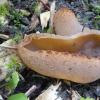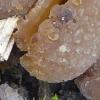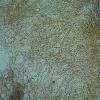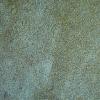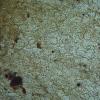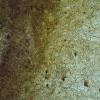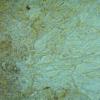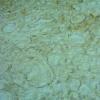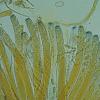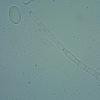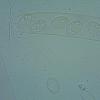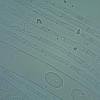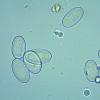
06-08-2025 08:56
 Antonio Ezquerro Antoñana
Antonio Ezquerro Antoñana
Hola a todos, Me gustaría saber qué opinan sobre

12-02-2012 11:31
 Hans-Otto Baral
Hans-Otto Baral
Hi allI am quite sure that nobody has a pdf of thi

02-08-2025 12:35
 éric ROMERO
éric ROMERO
Bonjour tous, J'ai trouvé sur pétiole de Fraxin

02-08-2025 17:21
 Andgelo Mombert
Andgelo Mombert
Bonjour,Je recherche la description et la planche

30-07-2025 20:52
Bohan JiaHi together, I've been looking posts in AscoFra

30-07-2025 10:12
 Bernard CLESSE
Bernard CLESSE
Bonjour à toutes et tous,Pourriez-vous m'aider à

31-07-2025 16:32
 Andreas Gminder
Andreas Gminder
Dear collegues,today I found on a very fresh fire

30-07-2025 18:06
Stefan JakobssonOn a decorticated twig of Alnus incana on moist so
This Peziza sp. was found growing on soil (sessile) among wood chips. Cup diameter varied between 2 and 5 cm. On the outside they were fairly scurvy. All microscopic observations and measurements were done in water, except for the reaction with IKI (positive). The images Bek2 10 01 through Bek2 10 04 give a cross-section through the excipulum starting at the hymenium and ending at the ectal side. The excipulum contained large globose to irregularly formed cells with diameters up to 120 micron (images Bek2 40 05 / 06). Paraphyses were simple, septate, with hyaline vacuoles, and slightly swollen apex. Spore sizes (free spores in water) were (n=18): 16.1-20.6 x 8.2-12.2 micron. Given these data it was difficult to find an appropriate identity for this species. So, we hope you can help us.
Kind regards,
Jan
Je pense qu'il s'agit de Peziza vesiculosa Bull.
Cordialement
René
Thanks for your suggestion of P. vesiculosa. We considered that species, but Hansen (2002) reports larger spores (20.5 -24 micron) compared to those of our collection (16.1-20.6 micron). Also, according to Hansen, the parafyses should have distinct yellow guttules which we didn't observe in our samples (see images). So, we still feel somewhat puzzled.
Kind regards,
Jan
KInd regards,
Jan

Did you consider P. granularis ?
Amitiés
Michel
Thank you for your suggestion of P. granularis. According to Hohmeyer (1986) spores are 19-22 micron long, and (17)18-21 micron according to Spooner (2016), compared to 16.2-20.6 micron for our collection. However, it is only 0.5-3 cm across compared to 2-5 cm for our collection.
Actually, the best fit we found was that with Peziza sp. c from Hansen's paper (2002) which is 2.8-8 cm across, has a scaly, scurvy outside, spores 18.5-20.5 micron long, parafyses with hyaline vacuoles, and thick-fleshed apothecia (1.5–3 mm thick) compared to 1.5-2.5 mm for our collection). Unfortunately, we don't know whether a name has been traced for this species, and we don't have a further microscopic description for it.
Kind regards,
Jan

We took samples on two occassions with a fortnight in between. The first sample was studied after giving it an extra ripening of about a week. In none of the samples we found yellow vacuoles in the paraphyses. Unfortunately, there is no material left.
Kind regards,
Jan
J'ai proposé le nom de P. vesiculosa, du fait que toutes les toutes photos présentées montraient que l'espèce avait été étudiée alors qu'elle était encore immature. Le fait d'indiquer que vous avez mesuré les ascospores hors des asques ne veut pas dire qu'elles sont matures. J'ai par conséquent considéré que vous aviez étudié l'espèce encore immature et que les ascospores n'avaient pas encore atteint leur dimensions maximales. Par ailleurs, l'apothécie que vous montrez possède une furfuration très grossière, bien typique pour P. vésiculosa, et possède de grandes cellules dans l'exc. médullaire supérieur, dépassant facilement les 100 µm de diamètre !
Vous indiquez avoir mesuré des ascospores jusqu'à 20,5 µm. En fait, et à ma connaissance, il y a peu d'espèces qui ressemblent macroscopiquement à P. varia et autres, et possède un médulla moyen de textura intricata (ce qui semble être le cas ici, non ?), dont les ascospores sont supérieures à 18 µm de long. Il y a P. vesiculosa, P. megalochondra, avec des cellules très grandes, plus de 200 µm de diam. dans la chair et un pigment jaune dans les ascospores et paraphyses. Il y a P. granularis Donadini, mais qui est une petite espèce, vite plane, souvent teinté olivâtre et non furfuracée, comme le montre la photo de votre champignon. Il y aurait encore P. granulosa Schum., ss Bres., espèce que je ne connais pas, (non P. granularis ss Boud. = P. granularis Donadini).
Merci de me dire si vous avez mesuré les ascospore sur sporée.
Cordialement, René
Thank your so much for your clear explanation, René. So, the conclusion is that the specimens we collected are immature P. vesiculosa!
Update:
I probably misunderstood your last sentence "Merci de me dire si vous avez mesuré les ascospore sur sporée.", because I already mentioned the spores sizes in my second reply earlier in this thread.
We measured the spores from a spore print (sporée) and the results were in the same range as reported before: 16.2-19.9 x 9.3-11.5 micron (see image).
Kind regards,
Jan
Merci pour les précisions. Dans ce cas, P. vesiculosa peut être exclu. Je pense qu'il s'agit très probablement de P. varia (Hedw.) Fr. (= P. cerea Bull., = P. micropus Pers.). Veuillez encore contrôler si la chair comprend une textura médullaire moyen du type intricata.
La détermination des espèces de ce genre est assez difficile, surtout si l'on étudie pas l'espèce soi-même !
Cordialement
René
